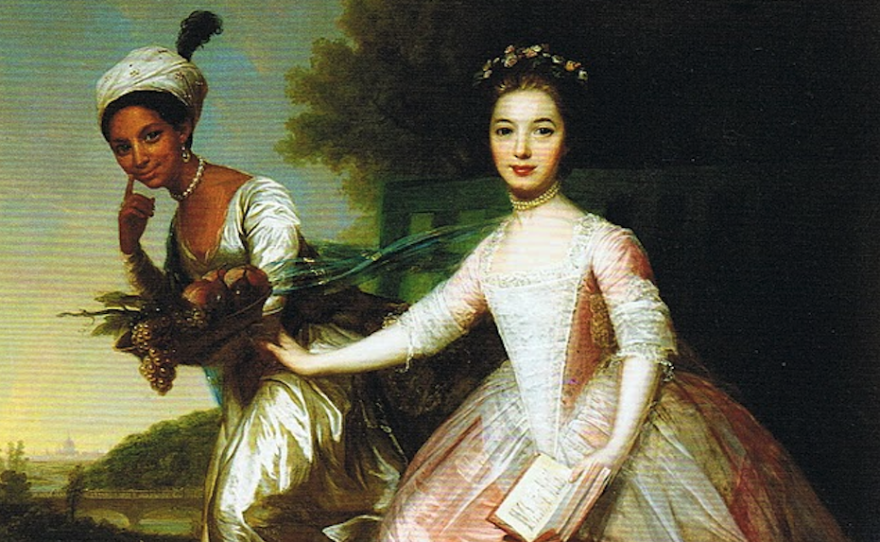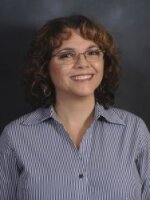Belle is a 2013 British drama now playing at select theaters across the country; it opened in Pensacola over the Memorial Day holiday weekend and is now back at the Gulf Breeze Cinema. And, it’s a film that Pensacola area residents may want to see because of its local connections.
The film is of note because of its connections to the city of Pensacola.
It was inspired by the 1779 painting of Dido Elizabeth Belle, who was depicted wearing a beautiful dress and sitting beside her cousin Lady Elizabeth Murray. Both were nieces of William Murray, 1st Earl of Mansfield, then Lord Chief Justice of England and Wales, who commissioned the portrait. One of the most interesting aspects of the painting is that Dido, who was biracial, is depicted as an equal.
As it turns out, Dido Elizabeth Belle (born around 1761) was the daughter of British Admiral John Lindsay and his slave (later freed) Maria Belle, who are both known to have been in colonial Pensacola in the 1760's.
An image of the painting of Dido - and some of the back story- is included in the 2009 book Historic Pensacola written by University of West Florida history professor John J. Clune and UWF archaeologist Margo Stringfield. Over the years, Stringfield - whose thesis focused on Maria Belle - has been intensifying her research for a new manuscript titled “Prelude to a Portrait: Searching for Maria Belle.”
Stringfield says she and her colleagues at the UWF Archaeology Institute first came across Maria Belle while researching land ownership on a colonial Pensacola site for a project the team was working on back in the early 1990's.

“When we first began to search for primary resources on her, one of the documents that was available was a (contract) conveying a lot that was owned by Sir John Lindsay when he was stationed in Pensacola in 1764-1765. This particular lot was conveyed to Maria Belle. The process started in 1773 and it was confirmed in Pensacola in 1774.”
According to Stringfield, the material imbedded in the document yielded a wealth of information.
It recorded conveyance of a piece of property (near today’s downtown) for a nominal amount of money, consideration of a peppercorn a year. Also, included in the text was a requirement that Belle build a house. That detail suggested that the original house had probably been destroyed in one of the storms that had hit Pensacola in the previous years.
In the document, “She (Maria Belle) is referred as a Negro woman of Pensacola, formerly of Pensacola, and then residing in London. So, we know that she has roots in Pensacola. We know that when the deed transfer was made she was living in London,” says Stringfield, noting that such information helped researchers track Belle’s whereabouts and activities.
There is physical evidence of Maria Belle's life in Pensacola. In 1990, Stringfield was part of a team of University of West Florida archaeologists - lead by Dr. John Phillips - that conducted the first of several excavations on the property, which was in a high-status area west of the main fort.
"This lot was in a lovely neighborhood," says Stringfield. “I think most people today would not think 20 years ago that our west side of town was particularly a high-status area during the colonial period, but it was. And, this is where you saw other people, of the same status as John Lindsay, establishing themselves along the western bay front.”
During that first excavation, the team discovered a barrel-lined water well that held been filled. Evidence that they were dealing with a substantial British occupation became clear from the types of artifacts recovered. Once abandoned as a water source such wells were used as trash pits, which can reveal a great deal about a person's daily life. According to Stringfield, the picture that emerges from the Maria Belle site is one of a life of comfort in Pensacola on the Florida gulf coast frontier.
As an example, Stringfield says artifacts recovered from excavations at the Fort of Pensacola, such as substantial amounts of wine bottle glass and pipe stem fragments are reflective of manly behavior. In contrast, artifacts recovered from large discrete features on the house lot reflect a more genteel lifestyle, “We see things like elegant decanter stoppers and delicate wine glass fragments,” says Stringfield, adding that they also found ceramics and white salt-glazed stoneware, many associated with tea, that are indicative of a higher-status life-style.
A review of land use records and colonial Pensacola maps dated 1778 and 1781, indicate home on the lot Maria Belle once called home. Also, there is a “Mrs. Bell, widow” listed among property owners compiled by the Spanish retaking control right after the 1781 Battle of Pensacola. While it cannot be proven that this individual is the same Maria Belle that was deeded property in 1774, Stringfield believes it’s “highly likely.”
Not long after the conveyance of the property, the historical records also revealed a document referring to a Maria Belle in Pensacola paying a manumission fee of $200 for her freedom, an action that would have cemented her freedom in North America. Two hundred dollars would have been a substantial amount of money in 1774.
Given that Maria Belle’s daughter Dido was born in 1761, and then British Navy Captain John Lindsay was stationed in Pensacola in 1764 and 1765, it leaves one to wonder if the child also lived here before being taken to London, where she was raised by Lindsay’s uncle Lord Mansfield.
Historical records show Dido was baptized in 1766 in London at five years of age. The baptism record indicates that she was born during the time her father John Lindsay was in the West Indies. A guest in Lord Mansfield’s home was later quoted as saying her mother, Maria Belle, was taken from a Spanish ship.
Stringfield says there are still questions as to where Dido was born and the location and circumstance of Lindsay’s acquisition of Belle, adding that her current research is encouraging and may soon yield more answers.
“Our research is looking at better defining the time that Lindsay was stationed in the Caribbean Basin, including Pensacola, as well as Maria Belle’s movements," says Stringfield.
She does confirm that Belle was in fact a slave, noting that documents refer to her as having been freed by Lindsay. Stringfield says that freedom probably would have been granted in 1772, or earlier, which was a period of time that Dido’s great uncle Lord Mansfield, Lord Chief Justice of England and Wales, issued his famous ruling in the Somerset case that was pivotal in the eventual end of slavery in England (1883).
Lord Mansfield decided that:
The movie Belle depicts the struggles that Lord Mansfield experienced during his consideration of this historic case involving slavery, while also going against social conventions of the time by providing a privileged upbringing for his biracial great niece.
Dido’s mother Maria Belle, herself a freed slave, brings that part of world history to Pensacola.
Not unusual for period films, Belle takes some creative license and doesn’t go into any depth about Maria Belle. But, Stringfield believes it’s well done and worth seeing.
“I think people will enjoy the film. It’s a wonderful opportunity to look more closely at the ties connecting British West Florida and Pensacola to England and the broader world stage in the 18th Century.”
As for record of Maria Belle after 1781, there’s no clear evidence of her in the 1784 Spanish census of Pensacola. As noted earlier, Stringfield hopes to be able to determine or confirm as many details as possible about Belle in the research for her forthcoming book "Prelude to a Portrait: Searching for Maria Belle." That would include information about her life before arriving in Pensacola; whether she had any children other than Dido Elizabeth Belle, who may have lived in Pensacola; and where she died.





